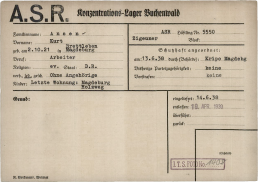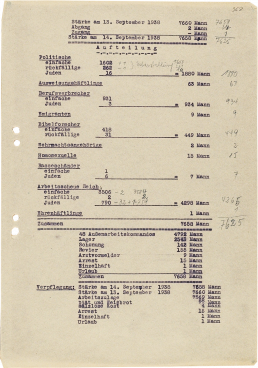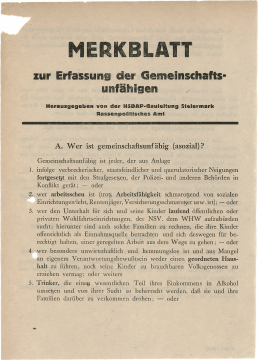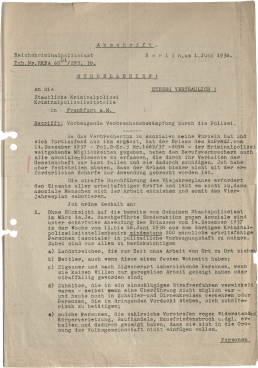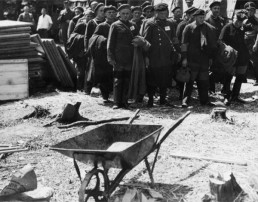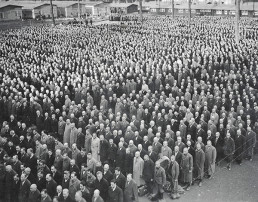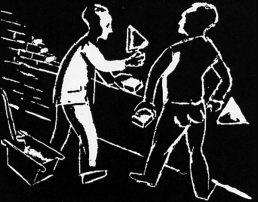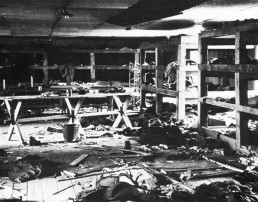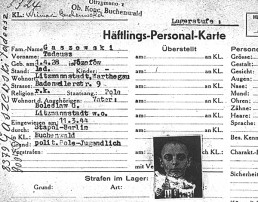Aktion Arbeitsscheu Reich 1938
In 1938, the number of prisoners in the concentration camps doubled. As part of the Aktion Arbeitsscheu Reich (Operation Work-Shy Reich, two waves of arrests of purported “anti-social elements”), the police sent over 10,000 men and several hundred women to the camps – most of them were adults, but some were teenagers. About 4,000 men were sent to Buchenwald, including about 1,200 Jews. For a brief time, the majority of prisoners in the camp were those with a black triangle identification badge, which marked prisoners as “anti-social”.
All those who were not a part of the “national community”, such as the unemployed, beggars, vagrants and those persecuted as gypsies, were considered “anti-social” or “alien to the community.” The police worked closely with the labor and welfare offices during the waves of arrests.
It was not until 2020 that the Bundestag (German parliament) recognized those persecuted as anti-social as victims of the Nazi regime.
"They called them work-shy. We are forbidden to talk to them. Mostly they are people with physical or mental disabilities who are taught to work here in the camp. They get the black mark. [...] Young people with spindly legs are supposed to learn how to work here under the supervision of the SS, who are fed to the hilt. [...] The accommodation of the "work-shy" is nothing more than a disgrace itself. From one day to the next they built a large barracks below the other barracks, with next to nothing in it. That’s how they live and they die en masse."
Report by the political prisoner Moritz Zahnwetzer on the arrival at Buchenwald of those arrested in the 1938 Aktion Arbeitsscheu Reich, 1946.
(Moritz Zahnwetzer: KZ Buchenwald. Erlebnisbericht Kassel 1946)
Kurt Ansin’s prisoner ID, 1938.
Kurt Ansin was arrested at age 16 for being a gypsy and sent to the Buchenwald Concentration Camp in June 1938. His file was stamped by the SS with the abbreviation “A.S.R.” (Aktion Arbeitsscheu Reich). Kurt Ansin had to wear the black triangle designating him as anti-social on his prison uniform.
(Arolsen Archives)
"Guidelines for the Registration of those Unfit for the Community," Office of Racial Policy Styria, December 1942.
The Volksgemeinschaft ideology was not only racist, but also included the idea of achievement. People without work were considered unworthy and seen as ballast, and were therefore to be disciplined through forced labor. The idea of “unfit for the community” was interpreted very broadly.
(Landesarchiv Steiermark)
"Crime Prevention Measures.” Decree from Reinhard Heydrich, chief of the Sicherheitspolizei (SiPo, Security Police) and head of the Sicherheitsdienst (SD, Security Service) to police commissioners, 1 June 1938.
The incarceration of those arrested on grounds of being anti-social in concentration camps took place in two waves in 1938. The decree of 1 June 1938 propelled the second wave of arrests later that month.
(StA Marburg)
Children in the Buchenwald Concentration Camp
1938: Deported to Buchenwald as “special operation Jews”
In the course of the November pogroms of 1938, the Gestapo sent 30,000 Jews, designated by the SS as “special operation Jews,” to concentration camps.
Rescue Initiatives: Bricklayers’ school and Poles’ school
Under the pretext of training skilled workers for the German war effort, prisoner functionaries around Robert Siewert, a political prisoner and Kapo of the construction detail
Limited shelter: The children’s blocks 8 and 66
Children were particularly vulnerable to the dangers of the camp. To protect them, political prisoner functionaries set up a children's block in Block 8 of the main camp in July 1943.
Deterrence through forced labor: Disciplinary work prisoners
From 1941 to 1944, a Gestapo labor re-education camp existed at the Buchenwald Concentration Camp.
